|












|
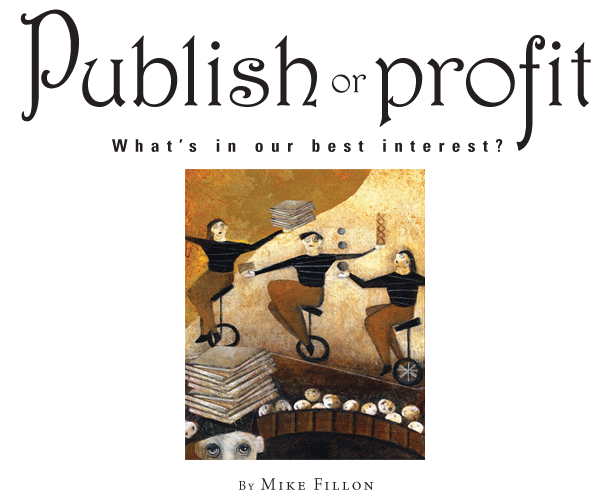 |
| |
|
|
| |
 E-mail to a Friend
E-mail to a Friend
 Printer Friendly
Printer Friendly |
|
| |
|
|
| |
For
a related report on conflict of interest from the Blue Ridge Group,
see the Blue
Ridge Report pdf. |
|
| |
|
|
| |
In
February 2004, the National Institutes of Health
(NIH) caught its scientists and physicians off guard with an announcement
of new conflict-of-interest (COI) rules restricting NIH employees
from holding stock in pharmaceutical companies or medical entities
such as health care companies and insurers. The rules marked a sweeping
change. Everyone from heads of the national research institutes
down to clerical staff was affected.
It all began with a series of front-page
articles in the Los Angeles Times disclosing that senior
government scientists were accepting enormous fees—half a
million dollars annually in some cases—for outside consulting
work, speaking engagements, and other arrangements with private
companies. Some were accepting the money while overseeing government
funding of research on the companies’ products at the same
time.
The series sparked Congressional hearings
and a wave of public interest, and in some circles, new questions
about the integrity of medical and pharmaceutical research. After
a torrent of complaints that the new rules on COI were too draconian,
the NIH found a middle ground. But the proposal and ensuing uncertainty
highlighted a thorny issue for research universities.
“Concerns about conflicts of
interest did not start with [the controversy] at the NIH,”
says Claudia Adkison, executive associate dean/administration and
faculty affairs at Emory School of Medicine (SOM). “This has
been a growing issue for quite some time, as the nature of biomedical
research and the way it is funded has changed dramatically in recent
years. Yes, we do have a responsibility to promote translational
research, and, yes, that does mean we must work with the for-profit
sector. But we must do so in a way that protects our patients, protects
the university, and protects the researchers themselves.”
|
|
|
|
|
 |
| |
|
| |
|
|
| |
In
1980, Congress passed the Bayh-Dole Act, which reversed existing
policy and encouraged universities to patent the discoveries of
their faculty and try to license them to companies for conversion
into for-profit commercial applications. Since that time, some university
biomedical research departments around the country have become what
one pundit has termed “hotbeds of entrepreneurialism.”
Universities are eager to patent potentially
lucrative technologies and encourage their researchers to work with
them in the process. Some researchers with a new discovery are eager
to form their own start-up companies, hoping to license the technology
from the university to get their new medicine, device, or process
to the market as quickly as possible. As a result, through university
policies that share the proceeds with the researchers and inventors,
researchers and their universities stand to reap millions of dollars
from marketable discoveries, although the mega-million successes
are relatively rare. This provides a powerful incentive for investigators
to explore the cutting edge of science in search of new treatments,
proponents say, and at the same time provides more money to be plowed
back into future endeavors.
But critics wonder whether universities’
missions to foster research in the public interest are now inevitably
compromised by profit motives. What about research for treatments
that affect only a small number of people? Does needed research
get abandoned if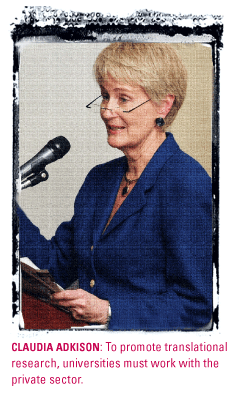 there’s no market? And can investigators who stand to make
millions of dollars really be objective about potential problems
with a new drug or technology?
there’s no market? And can investigators who stand to make
millions of dollars really be objective about potential problems
with a new drug or technology?
What are the stakes? The answers aren’t
all black and white, says Frank Stout, Emory’s vice president
for research administration and a former NIH employee. Yes, there
is potential for conflicts to harm research and the university’s
mission. But it is up to the research institutions to set policies
and standards and foster an appropriate atmosphere that encourages
cutting-edge results without compromising scientific integrity.
Furthermore, most of the university’s research is funded by
NIH without any involvement with industry.
The university has a guiding principle
for ethical conduct in research, a policy on COI in research, an
external consulting policy, and a comprehensive program to manage
potential conflicts of interest. It demands a high level of integrity
from its faculty, he says.
“The conflict-of-interest policy
means you don’t get yourself into a position where your external
financial interests conflict with your duties at the university,”
he says. “From our viewpoint, academics always comes first.
This is what society has entrusted us with, why parents entrust
their students to us, why our patients entrust us with their health
care, and why the public at large entrusts us with hundreds of millions
of dollars for research.”
If a policy as stringent as the one
proposed for NIH employees were expanded to include all scientists
receiving government funds, the effect would be dramatic, says Raymond
Schinazi, the director of the pediatrics laboratory of biochemical
pharmacology in the SOM who served on the first COI committee at
Emory. “If dropping all private relationships is one of the
conditions of getting NIH funding, then you have to decide whether
you want to accept it or seek more money from commercial interests,”
he says. “If the researchers can’t find adequate funding,
there’s a risk their discoveries will sit on the shelf and
benefit no one.”
Before 1980, the federal government
owned and licensed the technology underwritten by its institutions.
But a report in the 1970s revealed that 98% of federally financed
technology sat idle and never developed into commercial products
that might benefit the public. This waste occurred primarily because
once a unique idea, discovery, or innovation is published or otherwise
enters the public domain, it can no longer be patented by someone
or some entity.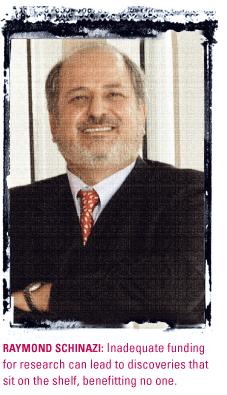 Without patent protection, companies will not invest perhaps hundreds
of millions of dollars in developing a new product if a competitor
can then simply copy or use it.
Without patent protection, companies will not invest perhaps hundreds
of millions of dollars in developing a new product if a competitor
can then simply copy or use it.
Then came Bayh-Dole. “The argument
behind Bayh-Dole was that there was no incentive to invest big money
in the development and marketing of a new product if you couldn’t
control it,” says Donald Stein, professor of emergency medicine
and neurology at Emory and a co-author of Buying In or Selling Out?
The Commercialization of the American Research University (Rutgers
Press, 2004). “A lot of great discoveries were not helping
anyone because the intellectual property kind of languished in the
void.”
Stout says commercialization of research
allows Emory to bring to the marketplace products that benefit patients.
“Working with industry promotes economic growth which supports
teaching and funds future research,” he says. “When
Emory receives a royalty for a product, a percentage goes to the
inventor, and the remainder is funneled into continued research
and support, both within the researcher’s department and throughout
the university.”
For example, California-based Gilead
Sciences and Royalty Pharma paid $525 million to purchase all future
marketing rights to Emtriva (FTC Emtricitabine), the HIV and hepatitis
B virus drug developed by two faculty members at Emory and partially
underwritten by NIH. Based on university policy, Emory will receive
60% of the $525 million, with the remaining $210 million shared
by the inventors.
Bayh-Dole has been very good for Emory.
Between 1995 and 1999, Emory’s share of fees and royalties
was approximately $29 million. Between 2000 and 2004, it shot up
to about $85 million. Even that healthy sum is dwarfed by the recent
Emtriva windfall.
Does the potential for researchers to earn such huge sums of money
increase the potential that some may be willing to compromise the
integrity of their work? Self-described “serial entrepreneur”
and Emtriva developer Schinazi says no.
“If you’re working on
something obscure that no one cares about, it might take years to
find out,” he says. “But if you’re working on
something really important such as a new device for heart surgeries,
a brain implant, or novel medicines for hepatitis or HIV infections,
if you falsify the numbers you’ll be found out right away
because everyone will quickly try to duplicate your findings to
confirm the data. Why ruin your career by doing something that stupid?”
The truth eventually will prevail. |
|
|
|
|
 |
| |
|
| |
|

 |
| |
|
| |
|
|
| |
Unintended
consequences
But outright misconduct aside, there is increasing evidence that
corporate sponsorship is altering the direction of research and
dissemination of research findings.
A recent study in the New England
Journal of Medicine concluded that universities routinely engage
in lucrative industry-sponsored research that restricts academic
freedom. In the study, Kevin Schulman from Duke University found
that “academic institutions rarely ensure that their investigators
have full participation in design of trials, unimpeded access to
trial data, and the right to publish their findings.” His
team surveyed more than 100 medical centers, finding that only 1%
involved in multi-center studies had independent access to all trial
data.
Studies published in major British
and American medical journals have shown that clinical trials by
conflicted investigators (those with financial interest in company
sponsors) are more likely to favor the drug or product on trial.
A recent study by the University of
Toronto analyzed 70 clinical trials of a controversial heart drug.
The results were telling: 96% of the researchers who were supportive
of the drug had ties to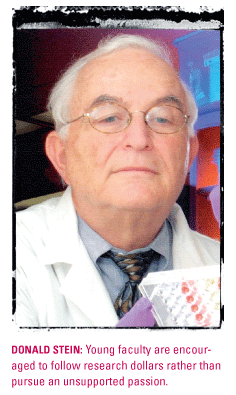 companies that manufactured it, and only 37% of those critical of
the drug had such ties.
companies that manufactured it, and only 37% of those critical of
the drug had such ties.
Investigators truly believe that outside
relationships won’t affect their objectivity, but the research
indicates that some may be wrong, says Adkison, who developed the
SOM’s first conflict-of-interest policy and oversees its compliance
program. She also is a founding member of FOCI-Academe (Forum on
Conflicts of Interest in Academia), a national organization affiliated
with the Association of American Medical Colleges (AAMC) that shares
information and strategies on the current state of affairs in this
arena.
The point of COI policies is not to
outlaw all conflicts but to manage the conflicts in a way that ensures
the integrity of the research as well as protects the patient volunteers
who participate in studies, she says. “There is no way we
could prohibit researchers from having any potential conflict of
interest. We want our program to manage the conflicts effectively.”
Conflicts in research range from faculty
investigators who also serve on speaker’s bureaus and boards
to those who accept paid consulting contracts with pharmaceutical
and device companies that sponsor their research, to others who
have formed private companies to market a drug or technology that
they have developed and licensed from the university.
The management plan required by the
medical school’s COI program varies depending on the type
of conflict and what role the faculty member plays in a given project.
For example, faculty are almost never allowed to serve as principal
investigators on clinical trials of a drug or product made by a
company with whom they have an outside financial relationship. The
compliance reviewers evaluate projects to make sure that patients
are fully informed, the patient selection process is unbiased, the
data are collected properly, and methods of analysis are appropriate.
In the School of Medicine, the process
starts with a faculty member’s disclosure of external activities
to Assistant Dean Brenda Seiton, who works with the SOM’s
COI committee, led by pathology chair Tristram Parslow, to review
potential conflict of interest. The committee as a whole reviews
the case and develops a plan for mediating or eliminating any conflicts
that have the potential to compromise research integrity. On behalf
of the SOM, Adkison oversees the COI program and insures that the
faculty member is informed about whether and how the conflict will
be managed.
“In the future, we need to move
toward emphasis on a broader culture of ethics, not just compliance
with a policy and set of rules,” says Adkison. “We need
to stress ethical standards of research conduct—basically
doing the right thing.” |
|
|
|
|
 |
| |
|
| |
|
|
| |
In
broad strokes
Just as managing conflicts of interest has grown increasingly complex
in the context of the new era of clinical research so has monitoring
informed consent, safety, and scientific validity. This broader
job of protecting the rights and welfare of people recruited to
participate in clinical trials falls to a university’s institutional
review board (IRB). But these days an IRB—usually made up
of scientists, clergy, doctors, and lay people—is often overwhelmed
by the job. At some large research universities, a single IRB must
review more than 1,000 clinical trials at once.
A 1996 report by the Congressional
General Accounting Office found that some IRBs spend only one to
two minutes of review per study. Board members can’t possibly
be experts in every field. In fact, most are in-house researchers
whose own studies are likely to come up for review someday.
Emory is not immune to these challenges.
In the past 10 years, in addition to the growth of unsponsored research,
the Woodruff Health Sciences Center’s sponsored research has
increased from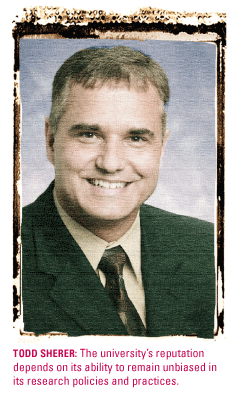 $133 million in 1996 to $326 million in 2005. That growth in turn
has placed stress on the research support infrastructure, including
its IRB activities. Recently, the university has made significant
enhancements to bring this critical component of the research enterprise
in line with the growth in sponsored research. The new budget for
the Emory IRB reflects an 80% increase in funding and a doubling
of the number of people tasked with analyzing research protocols.
Among other enhancements, a new electronic IRB system will allow
researchers to submit proposals online and create IRB dashboard
reports to help monitor IRB volumes, work loads, service, and performance.
Emory also is expanding the number of IRB committees from five to
seven and increasing stipends for IRB committee chairs.
$133 million in 1996 to $326 million in 2005. That growth in turn
has placed stress on the research support infrastructure, including
its IRB activities. Recently, the university has made significant
enhancements to bring this critical component of the research enterprise
in line with the growth in sponsored research. The new budget for
the Emory IRB reflects an 80% increase in funding and a doubling
of the number of people tasked with analyzing research protocols.
Among other enhancements, a new electronic IRB system will allow
researchers to submit proposals online and create IRB dashboard
reports to help monitor IRB volumes, work loads, service, and performance.
Emory also is expanding the number of IRB committees from five to
seven and increasing stipends for IRB committee chairs.
Professor James Keller, chair of the
uni-versity’s IRB, says that top-down involvement and transparent
scrutiny are essential ingredients for successful IRBs. “All
the top people involved with research at Emory know how important
it is. If things don’t go right, then the whole research process
can be shut down.”
The COI committee works closely with
both the Emory IRB and the Office of Technology Transfer, which
matches researchers and their ideas with companies or individuals
desiring to develop and market products. By sharing reviews of conflicts
of interest and its proposed management plan or prohibition, the
committee insures these other groups are aware of any conflicted
relationships being managed. Through this sharing, “sometimes
you discover things you didn’t know,” says Adkison.
Transparency is at the bottom of all
the precautions. After all, says Todd Sherer, Emory’s associate
vice president for research and director of the Office of Technology
Transfer, “we want to make sure that what we do within our
own walls is done without any bias.” The university’s
reputation depends on it. |
|
|
|
|
 |
| |
|
| |
|
|
| |
Us
vs. them
Schinazi says research misconduct is possible no matter the origin
of funding. More important, he believes that open collaboration
with private industry is essential if universities are to bring
the practical rewards of discoveries to the people who need them.
“At Emory, I am probably one
of the most conflicted people on campus,” says Schinazi, who
has started several companies based on his research. “I have
been here 28 years, and I love to educate young people. But I also
believe a university should be an engine for discovery and development,
especially if you combine your efforts with other faculty. Sometimes
universities can become too paranoid about conflicts.”
Schinazi believes that universities
can get so caught up in making sure nothing is amiss, they overlook
the big picture and become slow, bureaucratic, policing bodies.
“We’ve created jobs and saved lives and elevated the
university’s reputation a few notches,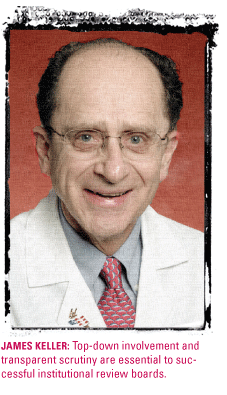 so give us the benefit of the doubt that we will do the right thing.
The bureaucrats should stop building walls and instead create bridges
to efficiently facilitate translational research in accordance with
Bayh-Dole. There are enough hurdles outside the university to convert
an invention to a life-saving product.”
so give us the benefit of the doubt that we will do the right thing.
The bureaucrats should stop building walls and instead create bridges
to efficiently facilitate translational research in accordance with
Bayh-Dole. There are enough hurdles outside the university to convert
an invention to a life-saving product.”
But speaking from another perspective,
giving someone the benefit of the doubt without disclosure and management
when lives and the reputation of the institution are at stake is
foolhardy, Adkison says. “It just takes one well-publicized
adverse event along with the discovery that a researcher has a previously
undisclosed financial interest in a study’s outcome to destroy
the university’s and the researcher’s credibility.”
Rather than doing less, she wants
to emphasize more—not so much policy and rules but partnering
with faculty to build a broader culture of ethical behavior. “I
really want the situation to be the faculty and the institution
working together to figure out appropriate ways to collaborate with
industry, that the school not be perceived as an obstacle to overcome.”
At the end of the day, Adkison wants
the research to withstand close scrutiny. “If questioned,
we should be able to say that we have not overlooked something in
order to pursue profit, to know that we have done all we could or
should.”
Mike Fillon writes
books and magazine articles on medical, technology, and science
topics. |
|
| |
|
|
|
Forbidden
or allowed?
1: Allowed after disclosure, with safeguards against bias and with
continuing oversight. Back to Question
1
2: Forbidden COI under current Emory policy. Back
to Question 2
3: Forbidden. Back to Question 3
4: Allowed after disclosure and with continued management. Back
to Question 4
5: Allowed after disclosure and with continued management. Back
to Question 5 |
|
| |
|
|
| |
|
|
|
|
|

